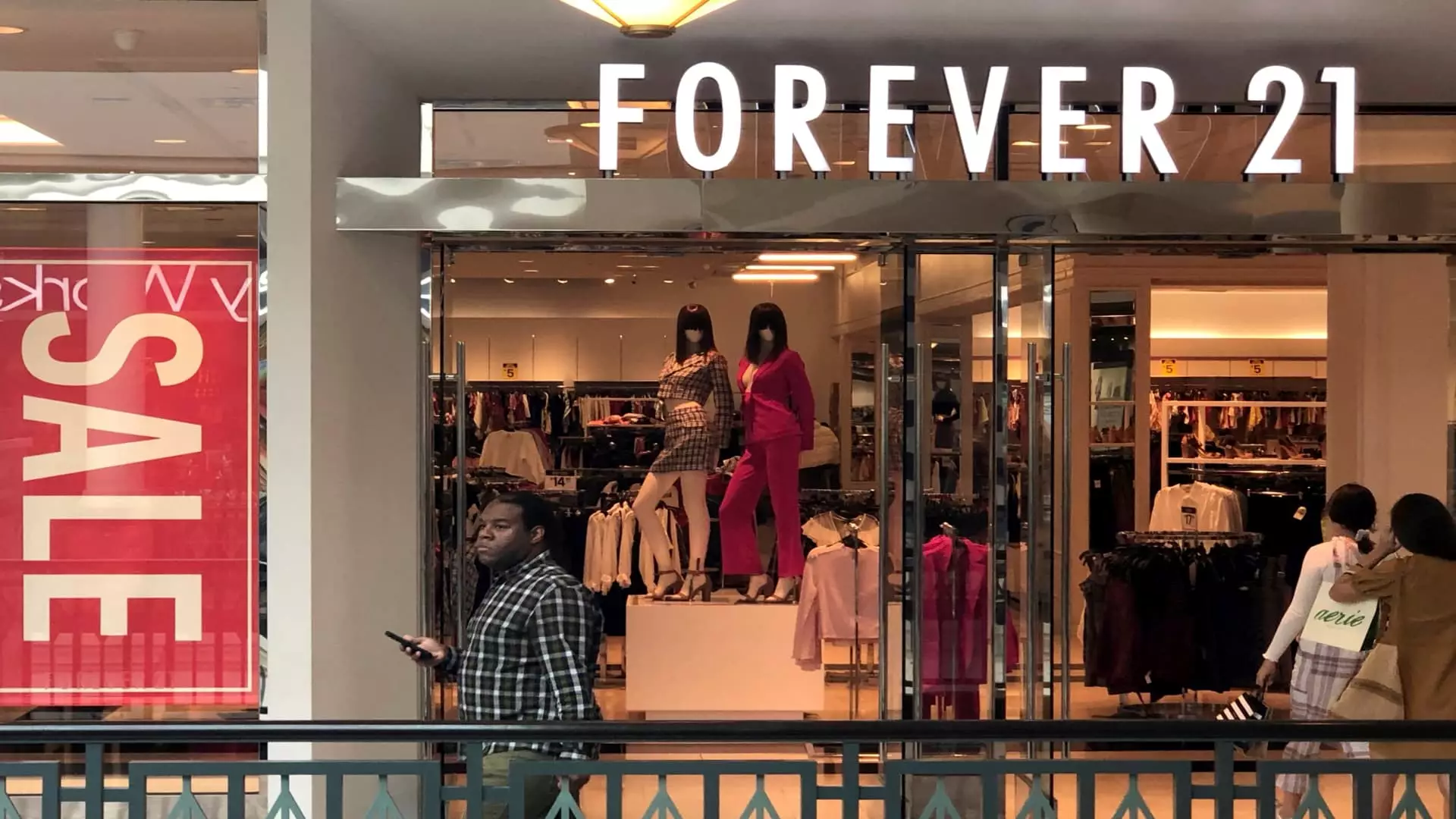Forever 21, once a mainstay in the fast fashion landscape, finds itself plunging into bankruptcy for the second time in six years. This situation is not just a mere stumble; it’s a symptom of a deeper malaise gripping many traditional retailers. The company has directly pointed fingers at fast-fashion e-tailers like Shein and Temu for its demise, emphasizing how they have leveraged loopholes in trade laws to gain an unfair advantage. This scenario illustrates a larger problem: when businesses are left to compete in a market that seems rigged against them, the results can be catastrophic.
The bankruptcy saga isn’t merely about mismanagement or competition; it’s about systemic issues arising from policy decisions. The U.S. de minimis exemption allows goods under $800 to enter the country without tariffs, an advantage that non-American companies exploit. Herein lies a fundamental flaw in our trade policy: it encourages a race to the bottom, making it almost impossible for domestic brands to sustain themselves without shifting their pricing strategy and causing collateral damage to the job market.
The Illusion of Partnerships
Interestingly, Forever 21’s parent company, Sparc Group, attempted to counter this existential threat by partnering with these same competitors. It’s commendable to seek collaboration in an era defined by cutthroat competition, but such efforts often come off as desperate rather than strategic. The partnership did not yield the intended results, revealing a hard truth: joining forces with your competitors while still functioning under an outdated business model is unlikely to solve fundamental issues.
Rather than innovating and adapting to meet the new wave of consumer expectations, Forever 21 is seeking shelter in a reactive strategy. Partnerships with disruptive brands can lead to temporary relief but rarely secure the long-term stability needed in a shifting retail landscape. The incessant focus on price competitiveness over quality and brand loyalty further compounds these challenges.
A Brand’s Identity Crisis
Forever 21’s hardships signal a larger identity crisis. Once celebrated for its trendsetting spirit, the brand seems to have lost touch with the very consumer it aimed to woo. After its first bankruptcy exit, the company briefly soared, posting impressive revenues of $2 billion, but this was short-lived. The fundamental problem lay in Forever 21’s failure to evolve alongside changing consumer preferences, particularly among younger demographics who prioritize sustainability and ethical production—a stark contrast to fast fashion’s ethos.
Culprit number one here is the relentless pursuit of profit amid a more conscious and discerning consumer base. Trying to adapt to ethical scrutiny without overhauling its core business model is like trying to fit a square peg into a round hole. Therein lies the brand’s struggle: can a company that built its reputation on rapid production and consumerism truly pivot to embrace sustainability?
The Financial Abyss: A Cautionary Note
The financial reports revealing a loss of over $400 million in the last three years are sobering. When a retail giant incurs such staggering losses, the ramifications can cascade throughout the supply chain, affecting countless manufacturers—many located in China and Korea—who rely on the company for orders. The fact that Forever 21 currently holds debts totaling $1.58 billion only heightens the urgency of its situation.
These numbers aren’t just statistics; they represent livelihoods and affect the broader economy. The ability to honor obligations to manufacturers is crucial, and when you’re gambling your future on strong financial maneuvers and partnerships with competitors, it risks a domino effect of failures down the line. The retail landscape has redefined itself, and brands must learn quickly: adapt or die.
Legacy and the Future: Can Forever 21 Rise Again?
Despite its apparent demise in the U.S., there’s a glimmer of hope. The intellectual property owned by Authentic Brands Group remains intact, and there is still interest in reviving the Forever 21 brand. Although the current scenario veers toward liquidation, the potential exists for new operators who may bring fresh perspectives and innovative strategies to the table.
However, these future operators must be cognizant of what led to Forever 21’s problems in the first place. They’ll need to modernize the distribution model while honoring the heritage of a brand that captivated millions. If managed wisely, the transition could lead to a new chapter for Forever 21. The big question remains: will the brand, now representative of cautionary tales, manage to break free from the shackles of its past and adapt to a new world where consumers are increasingly empowered and selective?
Brand resurrection in today’s fast-paced retail arena is not just wishful thinking; it’s a necessity.

